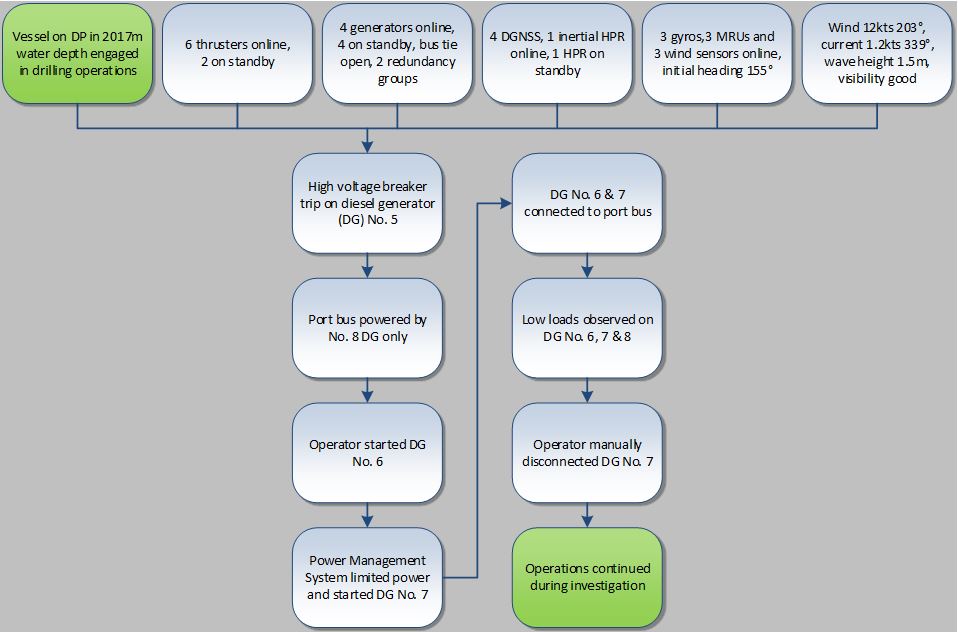High voltage breaker trip – DP observation

Comments:
Investigation started at the breaker for DG No. 5 in the port switchgear room. The breaker showed tripped and there was a fault present on the auto voltage regulator (AVR). DG No. 5 was locked out and investigation continued, the AVR breaker ‘S1’ was found tripped. Further investigating found that one of the wires from this breaker had chaffed on the inside of the box and resulted in a short and evidence of arcing to ground. The damaged wires were replaced and the rest of the wires in the junction box adjusted to avoid future problems.
After replacing the worn wires and test running the engine it was noticed that the load indicator on the PMS panel was showing a negative reading, which was incorrect. This signal was a feedback from the breaker module and was in fact sending a false milliamp signal to the PMS. Racked the breaker out to perform a hard reset, the kilowatt signal from the relay went to zero.
DG No. 5 was run, tested and connected to the 11kV bus, all in proper working order.
Considerations from the above event:
DP Event
Published: 10 August 2017
Download: IMCA DPE 03/17
Submit a Report
The following case studies and observations have been compiled from information received by IMCA. All vessel, client, and operational data has been removed from the narrative to ensure anonymity.
Case studies are not intended as guidance on the safe conduct of operations, but rather to assist vessel managers, DP operators and DP technical crew in appropriately determining how to safely conduct their own operations. Any queries should be directed to IMCA at [email protected]. Members and non-members alike are welcome to contact IMCA if they have experienced DP events which can be shared anonymously with the DP industry.
IMCA’s store terms and conditions (https://www.imca-int.com/legal-notices/terms/) apply to all downloads from IMCA’s website, including this document.
IMCA makes every effort to ensure the accuracy and reliability of the data contained in the documents it publishes, but IMCA shall not be liable for any guidance and/or recommendation and/or statement herein contained. The information contained in this document does not fulfil or replace any individual’s or Member's legal, regulatory or other duties or obligations in respect of their operations. Individuals and Members remain solely responsible for the safe, lawful and proper conduct of their operations.
